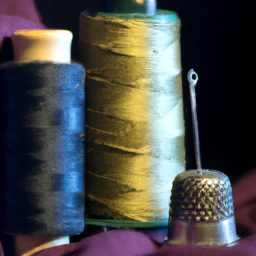
History of Boro Stitching
Boro stitching, also known as boro mending or sashiko stitching, is a traditional Japanese textile mending technique that originated in the Edo period (1603-1868). Boro, which means “rags” or “scrap fabric,” refers to the practice of recycling worn-out textiles by stitching them together to create new and functional pieces.
The origin of boro stitching can be traced back to the rural farming communities in Japan, particularly in the northern region of Tohoku. These communities, isolated from urban centers, had limited resources and couldn’t afford to discard clothing or textiles easily. Instead, they developed the art of boro stitching to extend the life of their garments.

The process of boro stitching involves painstakingly stitching together small patches of fabric using a running stitch. This stitch, known as sashiko, adds both strength and beauty to the repaired fabric. The stitching patterns are often geometric and repetitive, creating visually stunning designs.
Over generations, boro garments became a source of pride in these farming communities. The layers of stitches and patches told the story of the family’s history, with each mend representing a different generation. Boro textiles were often passed down as heirlooms, cherished for their beauty and the history they carried.
The popularity of boro stitching declined after World War II when Japan entered a phase of rapid industrialization. New clothing became more accessible, and the traditional practice of boro was seen as a reminder of poverty and hardship. However, in recent years, there has been a revival of interest in boro stitching, both in Japan and around the world, as a unique art form and a sustainable practice.
Contemporary artists and designers have embraced boro stitching, incorporating its techniques into modern designs and creations. It has also become popular among individuals who appreciate the beauty of slow craftsmanship and value sustainability. Boro stitching workshops and classes are now offered worldwide, allowing people to learn and practice this ancient art form.
Boro stitching serves as a reminder of our relationship with clothing, resources, and the environment. It highlights the importance of reducing waste and finding creative ways to extend the lifespan of our textiles. Through its resilience and beauty, boro stitching continues to inspire and connect people to their past while providing a sustainable path for the future.




